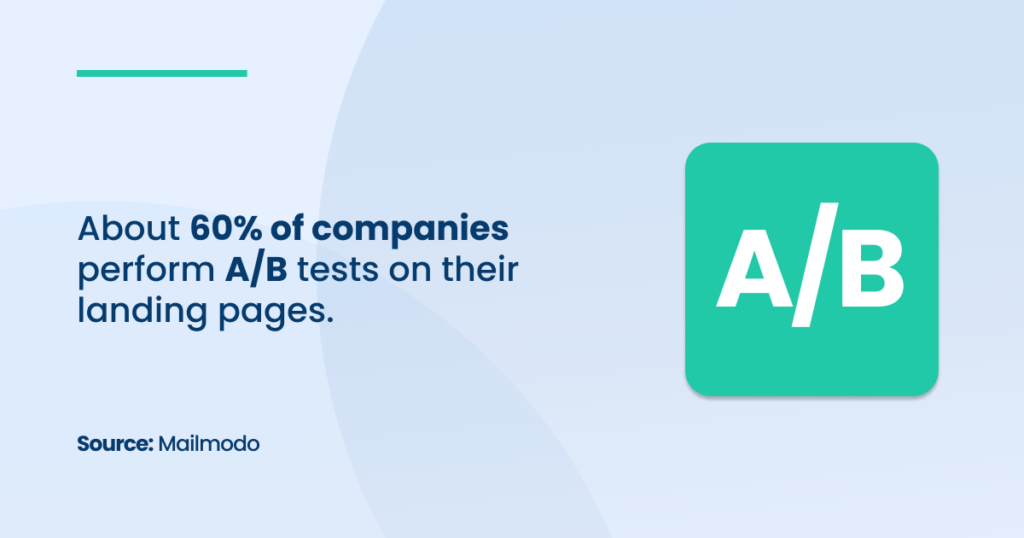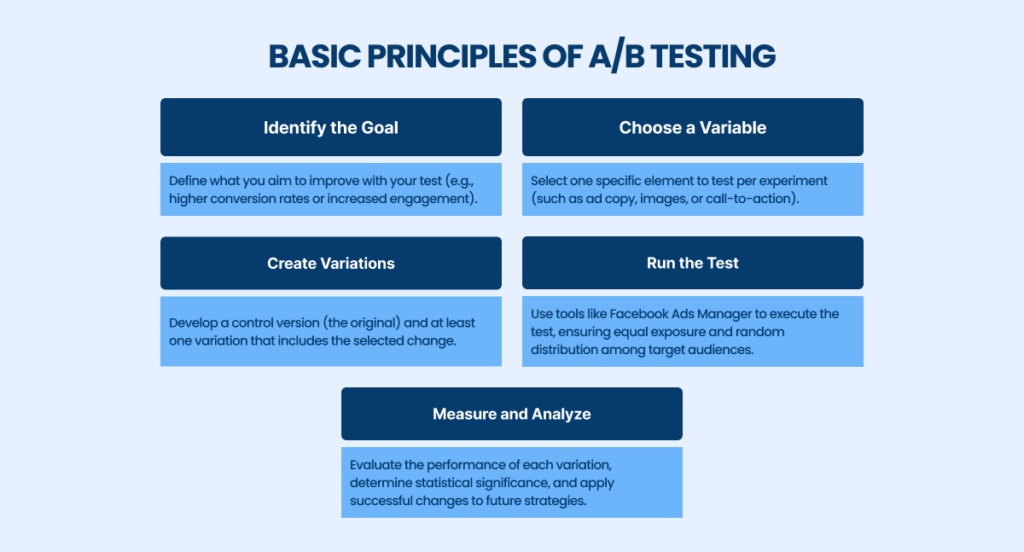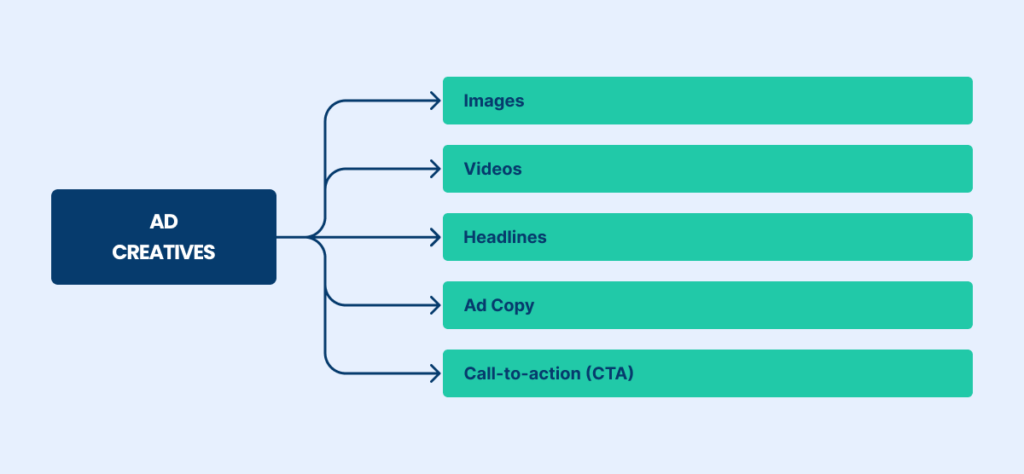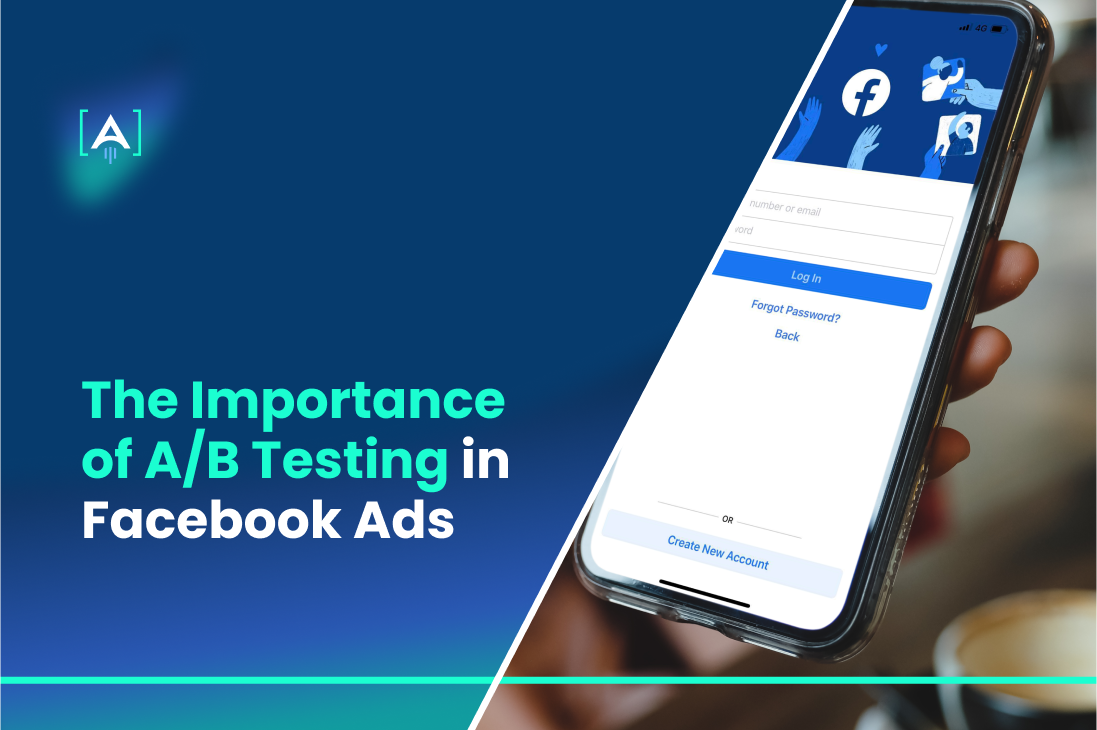You spent much time, money, and effort creating the perfect Facebook ad. It’s visually stunning, the copy is compelling, and the target audience is spot on.
But how do you know it’s truly the best it can be? Enter A/B testing.
According to Mailmodo, 77% of companies run A/B testing on the website.

A/B testing is like trying different things to see what works best.
You can find the one that brings in more money by comparing two ad versions, and ensuring your Facebook ads not only captivate but also convert can be daunting. This is where the expertise of a Facebook Ads Agency becomes invaluable.
In this comprehensive look at Facebook ads A/B testing, we’ll explore why it’s crucial, how to set up your tests effectively, and how to interpret the results to refine your marketing strategies.
What is A/B Testing?
A/B testing, or split testing, is a methodological process used in marketing where two versions of a variable (such as an ad, a webpage, or a user experience) are tested against each other to determine which performs better regarding measurable outcomes.
This concept forms the backbone of effective digital marketing strategies, especially in the context of Facebook advertising.
Source: Finances Online
With Facebook ads A/B testing, marketers can compare different elements of their ads to see which one resonates most with the audience. This could involve testing two visuals, headlines, or calls to action to see which leads to more conversions or higher engagement rates.
Why A/B Testing is Critical for Facebook Advertising
A/B testing is indispensable for advertisers aiming to optimize their Facebook ad strategy. Facebook’s robust Ads Manager platform facilitates these tests, allowing marketers to run experiments directly within the ecosystem.
By implementing A/B testing Facebook ads, businesses can make informed decisions that significantly boost their ad performance and ROI. This approach is crucial for Facebook video and lead ads, where engagement and conversion metrics can vary dramatically based on small ad content or design changes.
Source: Tech report
In a digital arena where ad spending must be justified, A/B testing Facebook ads provides empirical evidence to validate marketing decisions.
For instance, by testing different ad sets within Facebook Ads Manager, marketers can determine the most effective combinations of images, text, and target demographics. This is not just about tweaking elements for minor improvements; it’s about leveraging data to make strategic adjustments that align with business goals, such as increasing brand awareness or driving sales.
Basic Principles of A/B Testing
The fundamental principles of A/B testing revolve around hypothesis generation, experimental design, variable selection, and result analysis.

Setting Up Your A/B Tests in Facebook Ads
Setting up Facebook Ads A/B testing requires a structured and strategic approach to truly harness the platform’s vast potential and achieve measurable improvements in ad performance.
By defining clear objectives and meticulously planning your experiments, you can optimize your ad campaigns to meet specific business goals, such as increasing Click-Through Rate (CTR), improving conversion rates, and reducing Cost per Acquisition (CPA).
Each of these metrics plays a crucial role in the overall success of your Facebook ad efforts, and A/B testing is a powerful tool to achieve these objectives efficiently.
Defining Clear Objectives
The first step in setting up your Facebook ads A/B testing is to define clear and measurable objectives.
Whether your goal is to enhance engagement, drive sales, or generate leads, having a specific target in mind guides the design of your testing scenarios and helps focus your analysis on metrics that truly matter. This clarity ensures that the insights you gain are actionable and directly tied to your business outcomes.
Increase Click-Through Rate (CTR)
One common objective for Facebook ads A/B testing is to increase the click-through rate (CTR). A higher CTR indicates that more users find your ad compelling enough to click on it, which is vital to higher engagement or sales.
Source: Cxl
To test for improved CTR, you might experiment with elements such as Facebook ad copy, the call to action, or the visual content. By tweaking these components, you can review test details and determine which variations resonate best with your target audience, thus driving up the CTR.
Improve Conversion Rates
Improving conversion rates is another critical objective for many businesses using Facebook ads. This involves getting more users to click on your ads to take a desired action, such as purchasing or filling out a contact form.
Source: Invespcro
A/B testing can help you refine elements like the landing page experience, the ad copy’s specificity, or the offer’s attractiveness.
For example, testing different headlines or images in Facebook lead ads can provide insights into what persuades users to convert, helping you fine-tune your approach to maximize results.
Reduce Cost per Acquisition (CPA)
Reducing CPA is essential for maximizing the return on investment from Facebook ads. A/B testing plays a crucial role by helping you identify the most cost-effective ways to reach and convert users.
By methodically testing different ad sets, targeting strategies, and bidding options, you can uncover more efficient ways to allocate your ad spend. This might involve using Facebook’s detailed targeting features to reach a likely-to-convert audience more precisely or adjusting your bid strategies based on the performance data gathered from test variations.
Implementing the A/B Tests
To begin testing, create duplicate ad sets within Facebook Ads Manager and modify one element per test to isolate the variable’s impact.
This approach ensures that the differences in performance can be attributed directly to the changes made. It’s important to allocate equal budgets and ensure that each ad set is shown to a comparable audience segment to maintain the integrity of the test.
During the testing phase, monitoring each variant’s performance closely using Facebook Ads Manager is crucial. This tool provides comprehensive analytics that allows you to track key metrics such as CTR, conversion rate, and CPA in real-time. You should let the test run long enough to collect statistically significant data, which will help prevent skewed results due to anomalies or insufficient sample size.
Analyzing Results and Applying Insights
Once the test is complete, the next step is analyzing the results and determining which variant most effectively met the objectives. This analysis should go beyond surface-level metrics; it should delve into why certain variations performed better and how these findings can be applied to future campaigns.
Gaining valuable insights from A/B testing allows you to make informed decisions that enhance the overall effectiveness of your Facebook advertising strategy.
By continually applying the lessons learned from your Facebook ads A/B testing, you can incrementally improve their performance, leading to higher ROI and better alignment with your business goals. This iterative process helps refine your advertising tactics, ensuring your Facebook campaigns remain dynamic and increasingly effective.
Selecting Variables for Testing in Facebook Ads
One of the most crucial steps in setting up Facebook ads A/B testing is selecting the right variables to test. This involves choosing aspects of your ad campaigns most likely to impact their effectiveness and efficiency.
The primary variables typically include ad creatives, target audiences, placements, and scheduling. By systematically testing these elements, you can refine your Facebook advertising strategies, enhance ad performance, and ultimately drive greater campaign success.
Ad Creatives
Ad creatives are your ads’ visual and textual elements that users interact with.

Testing different variations of these elements can significantly impact how your audience perceives your ad and whether they engage with it.
Images and Videos
Visuals are often the first thing that catches a user’s eye. Testing different images or video thumbnails can reveal what types of visuals attract your target audience the most.
Source: [A] Growth Agency FB Page
For instance, does a lifestyle image with people perform better than a straightforward product shot? Or does a short, snappy video lead to more engagement than a static image?
Headlines and Ad Copy
The text in your ad needs to communicate value quickly and effectively. A/B testing Facebook ads can help you determine which messages resonate best with your audience. Test different value propositions, emotional appeals, or calls to action to see what drives interest and conversions.
Source: [A] Growth Agency FB Page
For example, does a headline emphasizing a discount perform better than one highlighting product features?
Call-to-Action (CTA)
The CTA is critical because it directs users on what to do next. Testing different CTAs (e.g., “Shop Now” vs. “Learn More”) can help you understand which prompts are more likely to lead to conversions, depending on the ad’s goal.
Source: [A] Growth Agency FB Page
Using Facebook’s Ads Manager, you can create multiple ad sets with varied creatives to test which elements contribute most to your campaign’s success. Reviewing the performance data provided by Facebook will allow you to optimize your ad creatives based on clear, actionable insights.
Target Audiences
Facebook offers incredibly detailed Facebook Ads targeting options, including demographics, interests, behaviors, and more. A/B testing different audience segments can help you identify which groups are more receptive to your ads and more likely to convert, enhancing overall campaign efficiency.
- Demographic Testing: Experiment with different age groups, genders, or geographic locations to see where your ads perform best. This information can help tailor your messaging and creativity to better suit the most engaged demographics.
- Interest and Behavior Targeting: Facebook allows advertisers to target users based on their interests and behaviors. Testing ads on various interest groups can uncover niche segments with higher engagement rates and better conversion potential.
- Facebook Lookalike Audiences: Utilize Facebook’s lookalike audiences to test how well your ads perform among people similar to your existing customers. Comparing the performance of lookalike audiences against other targeting methods can be highly revealing and help you scale your most effective campaigns.
Placements and Scheduling
The placement of your ads—whether they appear in the News Feed, on Instagram, in the sidebar, or elsewhere—can affect how they are perceived and interacted with.
Similarly, the timing of your ads can play a significant role in performance due to varying user behavior patterns throughout the day or week.
- Ad Placements: Test ads in different placements across Facebook’s network to determine where your ads gain the most traction. For example, do your Facebook video ads perform better in the Facebook News Feed or within Stories?
- Scheduling: Facebook allows you to specify when your ads are shown. Testing different scheduling options helps identify optimal times for engagement and conversions. Are your ads more effective on weekends or weekdays? What times of day do your ads receive the most interaction?
By A/B testing placements and scheduling, you can fine-tune where and when your ads appear, maximizing visibility and effectiveness.
The Future of A/B Testing and Facebook Advertising
As we look to the future of A/B testing and Facebook advertising, several key trends and technological advancements are poised to redefine how marketers strategize and execute their ad campaigns.
Integrating artificial intelligence (AI) and machine learning (ML), along with ongoing changes to Facebook’s algorithms, will dramatically influence the effectiveness and sophistication of digital advertising strategies.
Emerging Trends in Digital Advertising
The digital advertising landscape is continuously evolving, driven by technological innovations and consumer behavior shifts. One significant trend is the increasing reliance on data analytics and automation to optimize ad performance.
Source: Voicebooking
Businesses aim to achieve Facebook ads success, they are turning to more sophisticated methods of A/B testing that allow for testing more than one variable in a single experiment, often referred to as multivariate testing or split testing. This approach provides deeper insights and can significantly enhance the decision-making process.
Another emerging trend is the personalization of ads at scale. Thanks to advanced data collection and analysis techniques, marketers can now create highly personalized ad experiences tailored to individual preferences and behaviors.
This level of customization is proving to be incredibly effective in increasing engagement rates and improving overall campaign performance.
Moreover, dynamic creative optimization (DCO) in Facebook ads enables automatic adjustment of ad components based on real-time performance data.
By leveraging DCO, advertisers can ensure their ads are continually optimized for the best possible outcomes without manual intervention. This not only saves time but also significantly increases the efficiency of ad spend.
Integrating AI and Machine Learning
AI and machine learning are becoming integral to Facebook advertising, transforming how ads are created, tested, and optimized. These technologies can analyze vast amounts of data much faster than humanly possible, providing deeper and more actionable insights.
Source: Itransition, The Reasons for Adopting AI and Machine Learning
In the realm of A/B testing, AI can help identify which variables to test and predict the potential impact of different combinations, thus enhancing the efficiency of the testing process. For example, AI can suggest variations of Facebook ad copy that are more likely to resonate with a particular audience segment, or it can optimize a campaign’s targeting parameters to improve conversion rates.
Machine learning algorithms are also used to continuously learn from each ad’s performance, making real-time adjustments that can lead to better outcomes.
For instance, Facebook’s machine learning models can automatically adjust bidding strategies or reallocate budgets between ad sets to maximize the return on investment.
This level of automation and intelligence is crucial for staying competitive in a fast-paced digital advertising environment.
Anticipating Changes in Facebook’s Algorithms
Facebook frequently updates its algorithms to improve user experience and deliver more relevant content to its users.
For advertisers, staying ahead of these changes is crucial for maintaining and enhancing ad performance. Anticipating and adapting to algorithm changes can often mean the difference between a successful campaign and one that fails to reach its objectives.
Advertisers must stay informed about Facebook’s updates to effectively anticipate these changes and be ready to adjust their strategies quickly. This involves monitoring official announcements from Facebook, participating in industry forums, and possibly using predictive analytics to forecast future trends.
Moreover, A/B testing is an invaluable tool in adapting to algorithm changes.
By continuously testing different aspects of your ads and monitoring how changes in the algorithm affect your results, you can gain valuable insights that help you adjust your strategies proactively. This might include testing different types of content, ad formats, or targeting criteria to see what works best under the new algorithmic conditions.
Partner with [A] Growth Agency for Implementing A/B Testing on Facebook
As we have explored, A/B testing is an essential tool in modern digital marketing, particularly within the dynamic and competitive realm of Facebook advertising.
Navigating the intricacies of Facebook’s algorithms and the technicalities of A/B testing can be alarming, especially for businesses without specialized knowledge in digital marketing.
This is where partnering with a reputable Facebook Ads Agency, like [A] Growth Agency, becomes invaluable.
The Agency that specializes in leveraging cutting-edge tools and strategies can provide the expertise necessary to implement effective A/B testing and integrate these insights into a broader, result-driven Facebook ad strategy. Moreover, we believe in the power of data to inform and drive every strategy, ensuring our actions are as effective as they are innovative.
Don’t consider longer!

